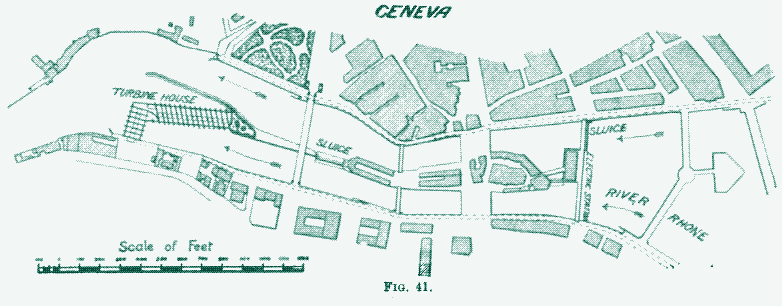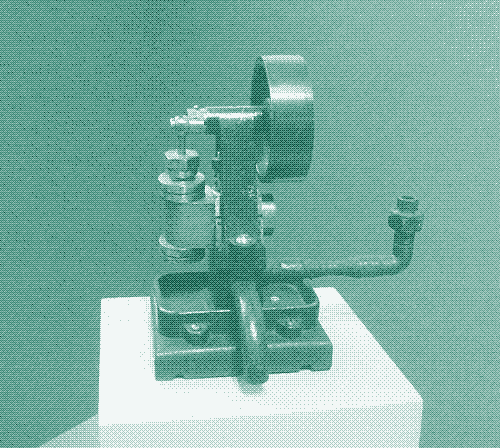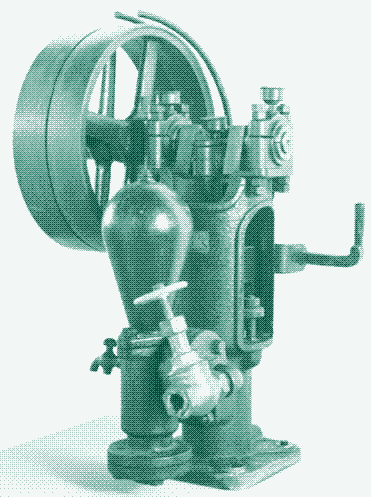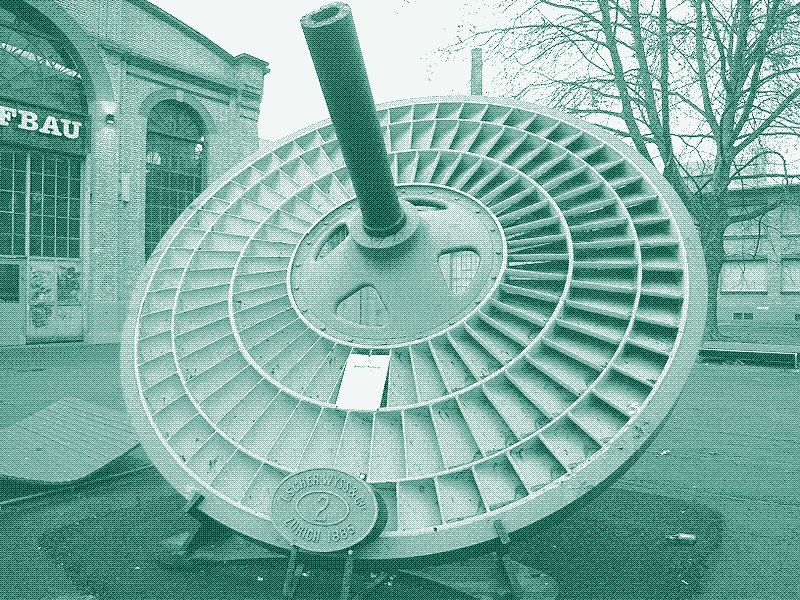
This pages contains supplementary information to the article “Power Water Networks”.
While hydraulic transmission is most suited to operate powerful but infrequently used machinery, this does not mean that it is totally unsuited for running a network of continuously operating machines. It all depends on how powerful the machines are.
Even the smallest 1.25 cm diameter pipe still gives a maximum power output of 3.26 hp (2.4 kW) at a pressure of 700 psi. Even if we substract 0.4 kW for the losses in distribution and in the motor, this still leaves more than enough power for operating many workshop tools. In On the Development and Transmission of Power from Central Stations (1894), W.C. Unwin notes:
“In neither the high pressure nor the low pressure network is the amount which can be transmitted by a single main very great. They are best adapted for machines working only a fraction of the 24 hours, or motors for small industries not requiring a great amount of power”.
Medium Pressure Power Water Networks
A great example of the second application were the power water networks built in Switzerland, the only country that established medium pressure public water schemes for power purposes. Between 1866 and 1895, hydraulic transmission systems aimed partly or exclusively at the distribution of power water were set up in several Swiss cities: Zürich, Geneva, Bâle, Neuchâtel, Lausanne, Bern, Vevey, Montreux, Lucerne and Lugano.

While the services were partly inspired by those designed by Armstrong, the workings and applications were quite different. The Swiss power water networks were designed to run continuously operating machines, many of them requiring circular motion. (The power was supplied by Pelton turbines and Schmidt motors, the latter being piston type engines).
Geneva Power Network
The most extensive Swiss system was built in Geneva. In 1872, the previously existing system of mains used to operate the city’s fountains was equipped with water pressure engines and extended. This became known as the low pressure network, which initially served to supply both potable water and power water through the same mains under a pressure of 70 to 85 psi. By 1885, it was operating 141 water motors.
A second network of mains - the medium pressure system - was inaugurated in 1886. Although it supplied potable water to some districts not reached by the low pressure system, it was especially intended to supply motive power to the artisans in the entire area of town. The low pressure system was now exclusively used for supplying potable water.
The medium pressure power water network operated at a pressure of 200 psi - three to five times the pressure of the normal town mains, but less than one-third the pressure of the Armstrong systems. The water motors connected to this network could each generated up to 4 hp using 3.5 cm diameter pipelines, and up to 50 hp with 10 cm diameter pipelines. In 1895, the medium pressure network supplied 55 different industries and a total of 195 water motors with an average output of 17 hp each. It was later extended to the suburbs and the villages in the surrounding countryside.
Five water turbines, each working two pumps, were installed with the inauguration of the new power station in 1886, then one or two were added each year until 1896, when the station had 18 turbines and a power capacity of 6,ooo hp. The “Usine de la Coulouvrenière” was at that time the largest power plant in Europe.
Direct Hydro Pumped Storage Plant
Another important difference between the Swiss systems and the other European and Australian networks, was topography. The power networks built by or inspired by Armstrong were all built on flat land, while the Swiss systems were built in the mountains. The Swiss could make use of natural water reservoirs at great heights, which allowed them to obtain a water pressure higher than that of a water tower without the use of hydraulic accumulators.
The mountains also provided them with the opportunity to use water turbines instead of steam engines for pumping water, thus producing 100% renewable energy- at the time, the Swiss had no access to coal. Last but not least, the water reservoirs offered a much higher power storage capacity than the hydraulic accumulators of the Armstrong systems.
In the nineteenth-century high pressure systems, hydraulic accumulators mainly acted as regulators of pressure and water flow, their storage power capacity being much smaller than that of a water tower. In Geneva, the water was pumped from the lake alongside the town into a large storage reservoir 119 m higher, at a distance of about 4 km from the town.

Three of the water turbines pumped up water to this reservoir at night, when demand for power was too low to keep them fully employed. This increased the power capacity during the day, when the demand for power water was largest - the reservoir could furnish about 800 hp for 5 hours. It would have taken almost 2,000 hydraulic accumulators to match the storage capacity of the Geneva reservoir.
The Geneva system initially worked without storage: water was pumped straight from the lake into the mains, using energy form a central hydraulic power station that was built together with the medium pressure network. However, the demand for power water was variable, large during the day and very small during the night.
When the city’s craftsmen closed their valves in their workshops and went home, the turbines in the central station built up excessive water pressure and had to be shut down as fast as possible. A first solution was found in a safety valve (the “jet d’eau”) right next to the power plant, which could spurt a 30 m high fountain in the air, releasing the pressure if demand suddenly fell.
Direct Hydro Pumped Storage Plant
In a sense, the Swiss power water networks worked in a similar fashion as the modern South-American direct hydro installations we described in a previous article, although the Swiss examples were more sophisticated. The water was distributed to many machines, and the system also included large-scale energy storage.
In fact, the network in Geneva could be described as a direct hydro pumped storage plant. The intricate distribution network must have introduced quite some friction loss, but then again the Swiss had enough water available, and they did not need to use coal to produce water under pressure.

Starting in 1888, part of the water from the reservoir was used to produce electricity, not replacing the hydraulic network but complementing it, which led to an electrified network of tramways in 1894. The electricity was produced by “branched” dynamos on the high pressure network, similar to the system in Antwerp.
In 1892, a second power plant was constructed, exclusively for electricity production, after which the first one again focused exclusively on the production of water under pressure. In Zürich, where a similar but smaller system was built a bit earlier, the power complex supplied a third energy source - direct mechanical power, transferred by wire rope.